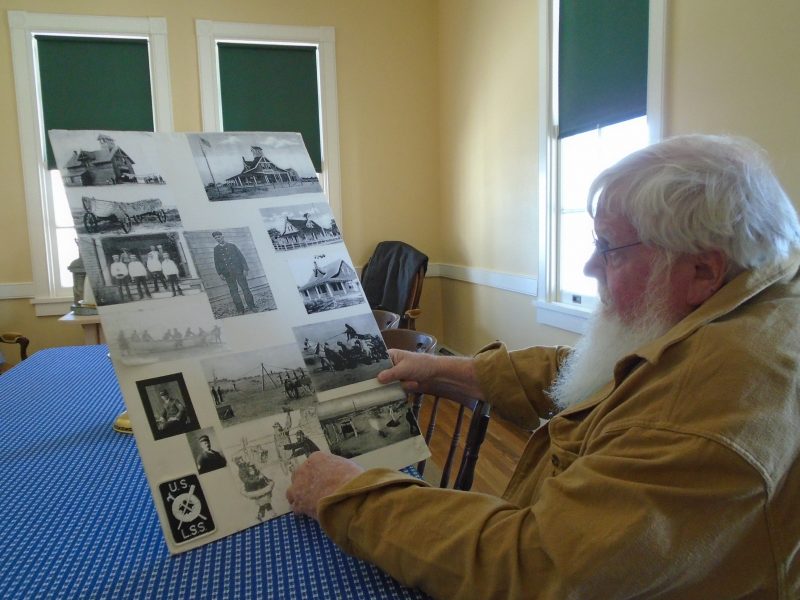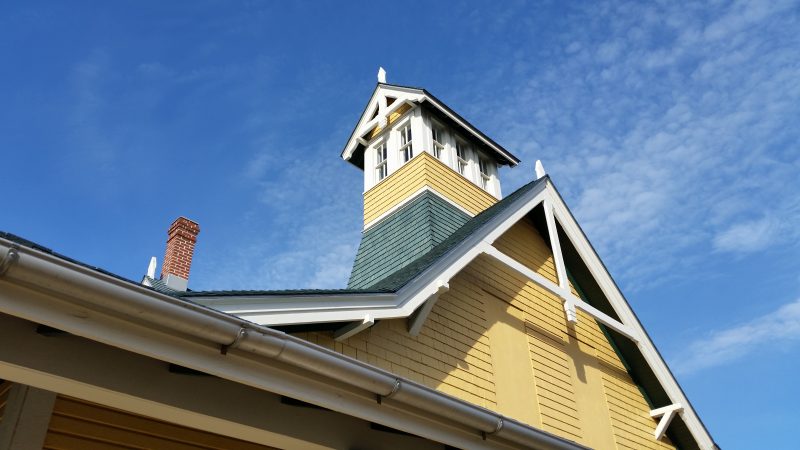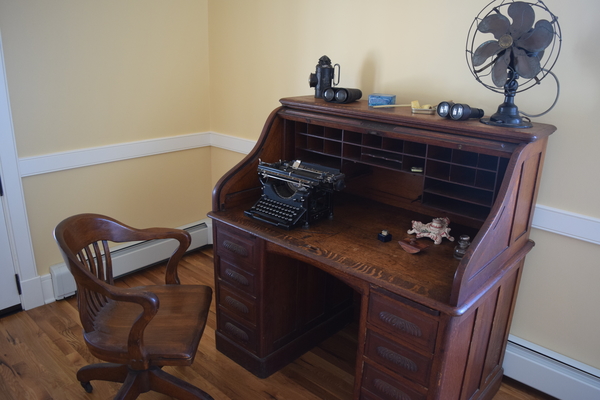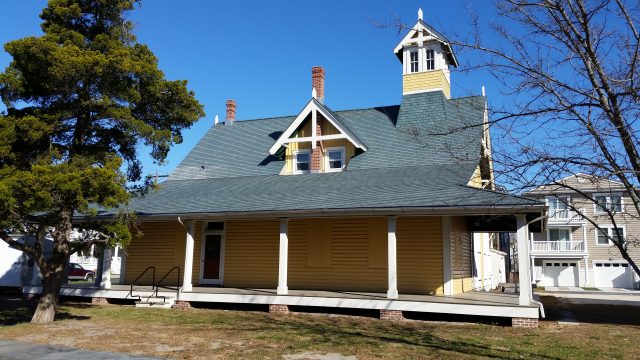By Donald Wittkowski
Up to this point, the transformation of Ocean City’s Life-Saving Station into a “living museum” has focused on renovations to the building and stocking it with historic artifacts to recreate its early 20th century heyday.
Now, the multi-year restoration project shifts outside the building to give the storm-battered grounds some touch-up work that will improve the aesthetics of the property at Fourth Street and Atlantic Avenue.
Highlights include adding new slate walkways, a flagpole and a wooden fence that will replicate the originals from the early 1900s. Handicap-accessible parking will also be built, as well as a paved area at the base of the boat ramps.
The property itself will be leveled out to remove some humps that have developed over the years, including erosion caused by flooding from Hurricane Sandy in 2012. The grounds will also be reseeded for a fresh carpet of grass.
“There’s lumps and humps in it and all sorts of stuff,” said John Loeper, chairman of U.S. Life-Saving Station 30, a nonprofit organization that is overseeing the renovations and operates the museum for the city.
However, museum officials will be careful not to go overboard by giving the property a lush, manicured look. Well aware that the “surf men” who manned the station were more concerned about saving lives than tending to the grass, the museum will instead allow the grounds to have more of a natural appearance.
“An Avalon or Stone Harbor quality was not what they had in mind,” Michael Calafati, a Cape May architect helping to supervise the restoration project, said of the life-saving men.

Improvements to the grounds represent the third phase of the Life-Saving Station’s restoration under the city’s ownership. City Council approved a $138,400 contract on Aug. 23 for the work. A $111,000 Hurricane Sandy recovery grant from the New Jersey Historic Trust will pay for most of the contract, with the city picking up the rest, Calafati said.
During the first two phases of the building’s conversion into a museum, the work focused on overhauling the exterior and interior of the structure. The U.S. Life-Saving Station 30 organization also went about painstakingly acquiring original artifacts or replicas to fill the museum.
Although the building dates to the late 1800s, the interactive “living museum” recreates the Life-Saving Station’s prime period, around 1900 or 1905. The restoration of the grounds will include historic elements, such as an old-fashioned fence and flagpole, to help replicate the early 1900s, Loeper explained.
“For a moment in time, you’re stepping back into 1900 or 1905,” Loeper said in an interview Thursday.
One of the centerpieces of the museum will be a nearly 26-foot-long replica surf boat, similar in design, but bigger, than the lifeguard boats used these days to protect Ocean City’s beaches. Loeper said the boat is under construction at a maritime museum in North Carolina and is expected to arrive in Ocean City in October for its public debut.
Calafati said a fourth phase would be needed to complete the museum. It would involve adding authentic shutters to the building and finishing the second floor, which is now closed to the public.

Records show that Ocean City’s Life-Saving Station was built in 1886. It is one of only a few surviving members of its type in New Jersey, Calafati said. It was among only six of its kind built between 1882 and 1891 in the nation.
“This is one of the best, if not the best, restored life-saving stations on the New Jersey coast. The one in Ocean City is heads and shoulders above the others,” Calafati said in an interview Thursday.
For years, the old building itself was in need of rescue. The city purchased the two-story structure from private owners in 2010 for nearly $900,000, ending a decade-long battle to save it from demolition.
Altogether, the purchase price for the building and the cost of renovations will come to about $3 million, according to figures released by Frank Donato, the city’s chief financial officer. The city has been awarded around $1.3 million in grants to help pay for the project.
The museum honors the surf men who risked their lives to save others. They were not like the modern-day lifeguards who protect Ocean City’s beaches.
Instead, they would rush to the rescue of distressed or sinking ships off the Ocean City coast. If one was spotted close to shore, they would frantically take action, either launching their lifeboats or deploying a rope-operated system to save the ship passengers.

Pointing to the importance of ship travel in the 1800s, Calafati called the Ocean City Life-Saving Station and its counterparts “a vital component of America’s economic growth.”
As ship travel expanded in the early 19th century, the government made passenger safety a higher priority. The U.S. Life-Saving Service, a government agency, was formed in 1848 to rescue shipwrecked passengers and crew members. It was a forerunner to the U.S. Coast Guard, which was created in 1915.
Ocean City’s station was occupied by the Life-Saving Service until 1915. The Coast Guard took over then and continued to use it for life-saving operations until the 1940s. It was then sold to private owners and became a residence. A succession of owners had it as their private home for decades before the city bought it in 2010.






